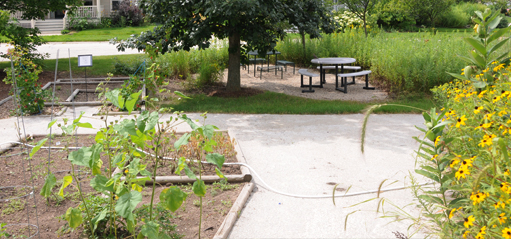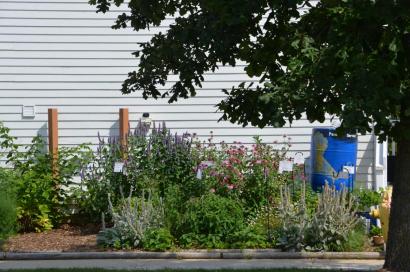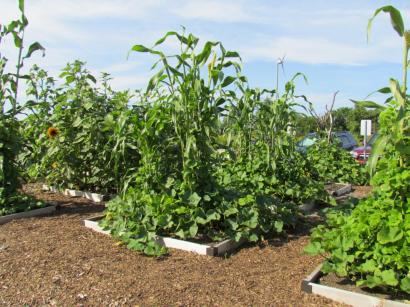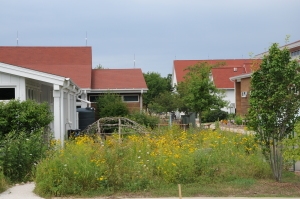Sustainable Schoolyard
Prairie Crossing Charter School’s Sustainable Schoolyard serves as an integral component of the curriculum offered at the school. Each class utilizes this outdoor classroom garden as a tool to connect their curriculum across several different disciplines, whether it is science, math, or social studies. The students’ ability to “learn by doing” increases their understanding of their units of study.

 As a Sustainable Schoolyard, Prairie Crossing Charter School’s campus is designed to be a learning laboratory. Our outdoor spaces are classrooms, with a variety of features and configurations to maximize student learning. The goals of the Sustainable Schoolyard are:
As a Sustainable Schoolyard, Prairie Crossing Charter School’s campus is designed to be a learning laboratory. Our outdoor spaces are classrooms, with a variety of features and configurations to maximize student learning. The goals of the Sustainable Schoolyard are:
- To promote environmental stewardship.
- To increase the opportunities for our students to interact with the natural world, fostering understanding and respect for ecological processes.
- To provide opportunities for creativity, problem-solving and teamwork.
- To increase possibilities for integrated STEM education in a constantly evolving learning lab.
- To teach about nutrition and health.
- To nurture skills and hobbies that can be enjoyed into adulthood.
- To increase the aesthetic appeal of the PCCS campus.
 Our Sustainable Schoolyard includes:
Our Sustainable Schoolyard includes:
- Classroom discretionary gardens. Each classroom has direct outdoor access to a garden area that teachers and students can design and use as they see fit. Examples include our kindergarten outdoor classroom, complete with balancing logs, a fort-building area, a bridge, a strawberry garden, benches and more; third and fourth grade classrooms have a Native American Peace garden; the 7th grade has installed a fire pit used as a gathering and cooking area.
- Raised garden beds. The campus contains over forty raised garden beds used to grow food crops. Each classroom has access to between 1 and 3 raised beds, some of which can be fitted with cold frames to extend the growing season. The gardens produce food for our Farm to Table program, as well as classroom cooking projects.
- Outdoor spaces for learning and reflection. Our goal is to create a schoolyard that is fully reflective of our mission and values, and that allows our students and teaching staff to utilize the outdoor environment as a classroom as frequently as they use their indoor spaces. Benches and tables surrounded by native plantings facilitate outdoor gathering and learning.
- Environmentally sustainable design. In addition to our LEED Gold certified Comstock building, the campus features many elements
 that highlight green design. These include porous recycled glass sidewalks, a wind turbine, solar panel, geothermal field, and more. Students and visitors alike can learn about green technologies from walking around our grounds.
that highlight green design. These include porous recycled glass sidewalks, a wind turbine, solar panel, geothermal field, and more. Students and visitors alike can learn about green technologies from walking around our grounds. - Increased interpretive signage. In order to make our campus a learning place for all visitors, we have incorporated increased informational signage to inform people about both the environmental elements of the campus, and the natural occurrences that we have observed. Permanent signage highlights some of the campus’ green features, and moveable, changeable, student-generated phenology signs highlight the seasonal natural changes we observe on campus.
Stay tuned for more updates as we continue to grow!